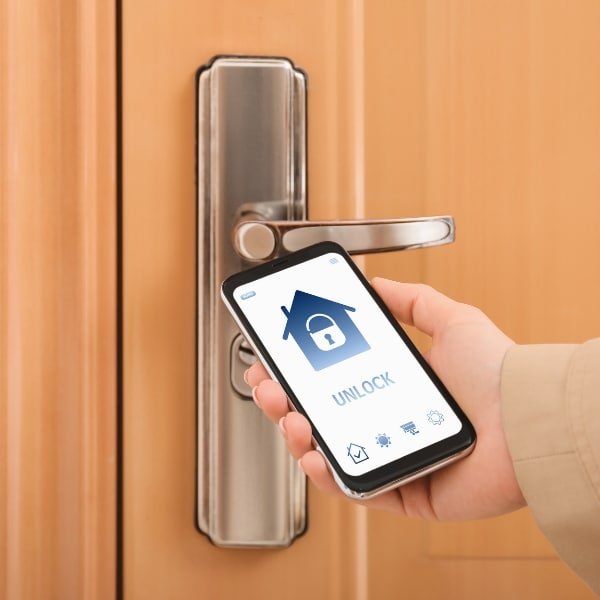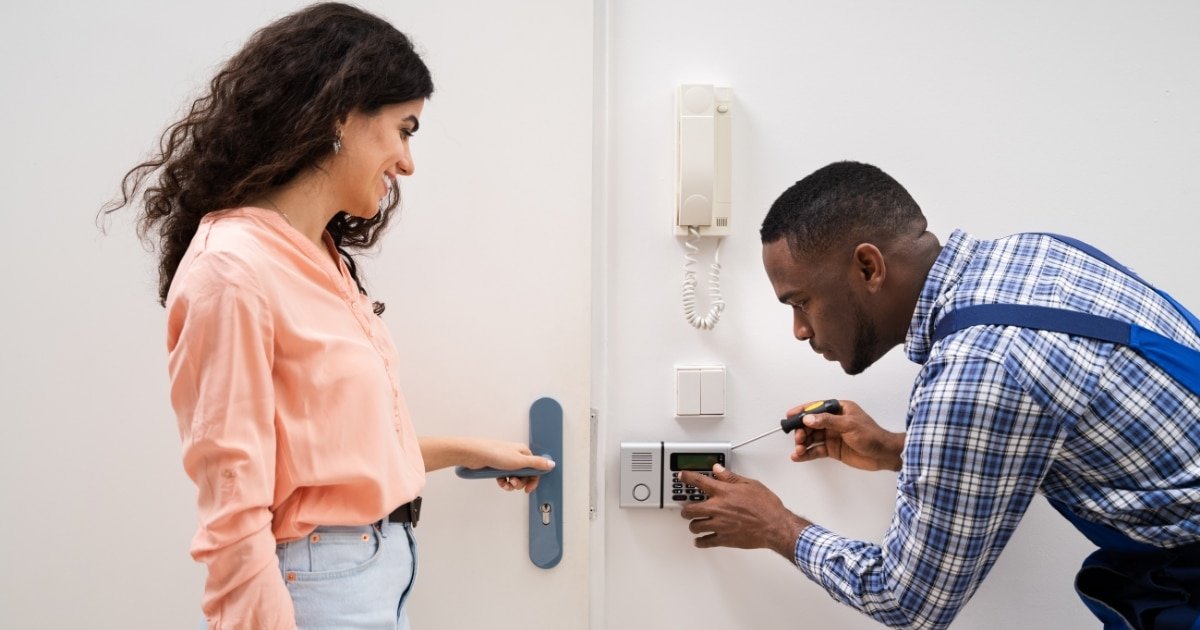Does Google Home Work with Ring Doorbell? Everything You Need to Know
Commercial Door Access Control Systems: Read this Before Installing
Are you looking to enhance the security of your business or organization? Have you considered installing a commercial door access control system? If not, now is the time to start thinking about it after reading.
This article will explain what commercial door access control systems are, why they are important, and the benefits they offer. We will discuss the factors before installing a system, the different types of systems available, and the components that make up a system. Additionally, we will cover the installation process, maintenance, and upkeep, common mistakes to avoid, and answer some frequently asked questions.
What are Commercial Door Access Control Systems?
Commercial door access control systems are security systems that regulate who has access to a building or specific areas within a building. The systems use electronic devices such as card readers and keypads to authenticate users and control entry. It is a standalone or networked system that integrates with other security systems.
Why are Commercial Door Access Control Systems Important?
Commercial door access control systems are essential for any business or organization to ensure the safety of its employees, customers, and assets. It provides a secure and efficient way to manage access to a building or specific areas within a building. By restricting access, businesses prevent unauthorized entry.
Benefits of Installing a Commercial Door Access Control System
Installing a Commercial door access control system has a lot of benefits to protect your business.
1. Enhanced Security
Commercial door access control systems provide security by restricting access to authorized personnel only. They also offer features such as alarm notifications and real-time monitoring to help detect and prevent security breaches.
2. Increased Convenience
There is no need for physical keys or manual locks with a commercial door access control system. Authorized users easily gain entry using their access card or code, making it a convenient and efficient way to manage access.
3. Cost Savings
It saves businesses money in the long run by reducing the need for physical keys and locks. They help prevent theft and damage to property.
4. Improved Tracking and Reporting
Commercial door access control systems track who enters and exits a building or specific areas within a building. This information can be used for auditing purposes and can help identify security breaches or suspicious activity.
Factors to Consider Before Installing a Commercial Door Access Control System
When you want to install a Commercial door access control system, you need to considers these steps.
1. Type of Business or Organization
The type of business or organization will determine the level of security required and the type of system needed. For example, a hospital requires a higher level of security than an office building.
2. Number of Doors and Entry Points
The number of doors and entry points determines the system’s complexity required. A larger building with multiple entry points requires a more advanced system than a smaller building with only one entry point.
3. Types of Doors and Hardware
The type of doors and hardware depends on the type of electric locks and strikes needed for the system. For example, glass doors require different hardware than wooden doors.
4. Integration with Other Security Systems
If there are other security systems, such as CCTV cameras or alarm systems, it is important to ensure that the commercial door access control system integrates with them.
Types of Commercial Door Access Control Systems
There are various type of commercial door access control system. You should understand it to select the best door access control system for your property. The below door access control systems are best, we think.
Standalone Commercial Door Access Control Systems
Standalone commercial door access control systems are self-contained security systems. The systems typically consist of a control panel, electronic locks, and access control readers such as keypads or proximity cards. They do not require a network connection or external devices, making them easy to install and maintain. Standalone commercial door access control systems are commonly used in small to medium-sized businesses and effectively secure the premises and restrict access to authorized personnel only.

Networked Commercial Door Access Control Systems
Networked commercial door access control systems are advanced security systems that allow centralized control and monitoring of access to a commercial building or specific areas. The systems use a network connection to communicate with a central server and allow authorized personnel to manage access remotely. Networked commercial door access control systems provide enhanced security features such as real-time monitoring, audit trails, and remote access management. They are commonly used in large businesses or organizations that require high security and access control.
Wireless Commercial Door Access Control Systems
Wireless commercial door access control systems use wireless technology to regulate access to a commercial building or specific areas. The systems include electronic locks, access control readers such as keypads or proximity cards, and a wireless communication network. They do not require a wired connection, making them easy to install and maintain. Wireless commercial door access control systems provide businesses with a flexible and scalable solution to secure access control. They are used in small to medium-sized businesses and are managed remotely using a mobile device or computer.

Components of a Commercial Door Access Control System
You need to understand about the component of a commercial door access control system. These are below in the list.
1. Access Control Panel
An access control panel is a hardware device that manages and controls access to a building or specific areas within it. It is installed at a central location and is connected to electronic locks, access control readers such as keypads or proximity cards, and other security devices. It provides a centralized control point for managing access permissions, creating user profiles, and monitoring access activity. It can be standalone or networked, depending on the size and complexity of the access control system. They are essential to any modern access control system and provide a secure and efficient way.
2. Card Readers and Keypads
Card readers and keypads are access control readers that regulate access to a building or specific areas. It uses proximity cards or smart cards to grant access to authorized personnel, while keypads require a PIN or code to be entered. Both readers are connected to an access control panel, which manages access permissions and controls the electronic locks. Card readers and keypads are used in commercial buildings, offices, and other facilities requiring secure access control. They provide a convenient and efficient way to manage access permissions and prevent unauthorized access to a building or specific areas.
3. Electric Locks and Strikes
Electric locks and strikes regulate access to a building or specific areas. They are unlocked using various methods, including key cards, fobs, and biometric scanners. On the other hand, electric strikes are installed in the door frame and are used to secure the door when it is closed. When unlocked, the electric strike releases the latch or bolt on the door, allowing it to be opened. They are used in commercial buildings, offices, and other facilities requiring high-security levels.
4. Request-to-Exit Devices
Request-to-Exit (REX) devices provide a safe and convenient way for authorized personnel to exit a building or specific areas. REX devices are activated when someone approaches the door to exit. They trigger using various methods, including motion sensors, push buttons, or infrared sensors. When activated, the REX device sends a signal to the access control panel, which unlocks the door and allows the person to exit. REX devices are essential to any modern access control system and provide a secure.
5. Power Supply
A power supply is a device that provides electrical power to an access control system. It is typically installed near the access control panel and is used to convert AC power from a wall outlet into DC power that the system can use. The power supply provides a stable and reliable power source to the access control system, ensuring it operates correctly and consistently. Power supplies come in various sizes and capacities, depending on the size and complexity of the access control system. They are essential to any access control system and provide a reliable power source to ensure that the system operates smoothly and without interruption.
Installation Process for a Commercial Door Access Control System
The installation process for a commercial door access control system typically involves several steps:
- Site Survey: A site survey conducts to assess the layout and requirements of the building or facility. It includes identifying the number of doors that require access control, the type of locks and hardware installed, and any wiring or cabling requirements.
- Design: Based on the site survey, a design outlines the components required for the access control system. It includes the access control panel, card readers or keypads, electric locks or strikes, request-to-exit devices, and a power supply.
- Installation: The access control system is installed according to the design plan. It involves mounting the access control panel, card readers or keypads, electric locks or strikes, request-to-exit devices, and power supply. Wiring and cabling are also installed to connect the components.
- Configuration: Once the hardware is installed, the access control system is configured to meet the specific requirements of the building or facility. It includes creating user profiles, setting access permissions, and configuring alarm and notification settings.
- Testing: The access control system is thoroughly tested to ensure it is operating correctly and that all components communicate as intended.
- Training: Finally, training is provided to authorized personnel on how to use the access control system, including how to grant access to users, manage user profiles, and troubleshoot common issues.
These steps ensure that a commercial door access control system is installed correctly and effectively to provide reliable security and access control for a building or facility.

Maintenance and Upkeep of a Commercial Door Access Control System
Maintenance and upkeep of a commercial door access control system are essential to its ability to operate effectively and provide reliable security and access control for a building or facility. Here are some key steps that should be taken:
- Regular Inspections: Regular access control system inspections conducted to identify any issues or potential problems. It includes checking for signs on hardware components, such as card readers, keypads, electric locks, and request-to-exit devices.
- Cleaning: The access control system should be kept clean and free from debris, dust, and other contaminants that can interfere with its operation. It includes cleaning card readers, keypads, and other hardware components regularly.
- Software Updates: The access control system software should be updated regularly to ensure that it is operating with the latest security patches and features.
- Battery Replacement: If the access control system uses battery-powered components, such as wireless card readers or keypads, the batteries should be replaced regularly to ensure they do not fail unexpectedly.
- Repairs: If any hardware components fail or become damaged, they should be repaired or replaced promptly to prevent further damage to the access control system.
- User Management: User profiles and access permissions should be reviewed regularly to ensure they are up-to-date and accurate.
Following these steps, a commercial door access control system is kept in good working order, providing reliable security and access control for a building or facility.
Wrapping Up
In conclusion, commercial door access control systems are essential to any business or organization’s security plan. They provide enhanced security, increased convenience, cost savings, and improved tracking and reporting. Before installing a system, it is important to consider factors such as the type of business or organization, number of doors and entry points, types of doors and hardware, and integration with other security systems. System components include an access control panel, card readers and keypads, electric locks and strikes, request-to-exit devices, and a power supply. The installation process involves planning and preparation, hardware and software installation, testing, and troubleshooting. Maintenance and upkeep include regular inspections and testing, cleaning and lubrication, upgrades, and updates. Common mistakes to avoid include poor planning and preparation, inadequate training for users and administrators, and failure to conduct regular maintenance and testing. By following these guidelines, businesses ensure that their commercial door access control system provides optimal security for their employees, customers, and assets.
FAQs About Commercial Door Access Control
How do I choose the right commercial door access control system for my business?
The right type of system depends on factors such as the type of business or organization, number of doors and entry points, types of doors and hardware, and integration with other security systems. Consulting with a security expert can help determine the appropriate system for your needs.
Can I integrate my commercial door access control system with other security systems?
Many commercial door access control systems can integrate with other security systems, such as CCTV cameras or alarm systems.
What are the ongoing costs of maintaining a commercial door access control system?
Ongoing costs include regular maintenance, upgrades, or updates provided by the manufacturer and replacement of components that have reached their end-of-life.
How do I ensure my employees are properly trained to use the system?
Proper training is essential for employees to use the system correctly. Training should include how to authenticate users, gain entry through doors or entry points, and what to do in an emergency.
What should I do if I experience issues with my commercial door access control system?

